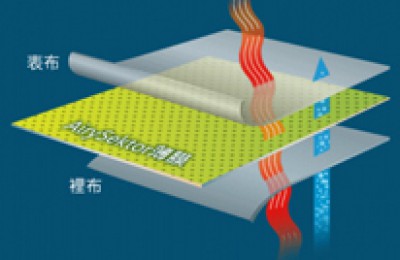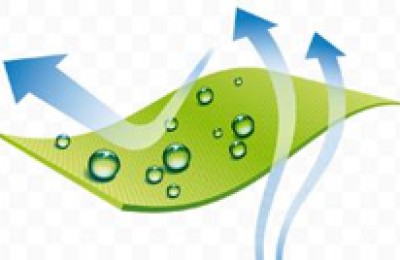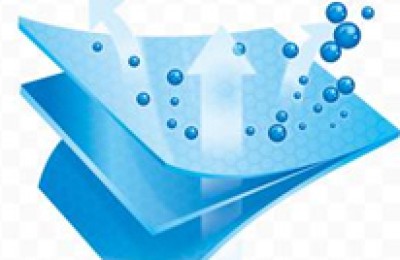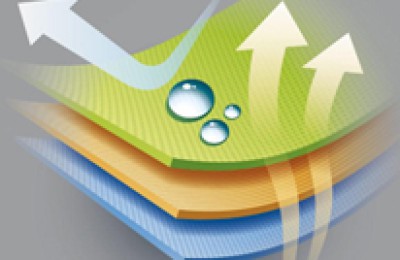29. What aspects should be assessed when evaluating the effect of polyester simulated silk?
Answer There is no national standard for evaluating the effect of polyester simulated silk. At present, the more widely adopted evaluation methods in factories are visual inspection and hand touch method. Some also adopt measurement of alkali reduction rate and physical indicators, such as tearing strength, elongation, density, etc. The change is the reference value for measuring the imitation silk effect. These can reflect the style, effect and degree of polyester simulated silk to varying degrees. The overall evaluation method can be divided into two major aspects: appearance style and characteristic style, which are described below for reference.
①Evaluation of appearance style. The evaluation of appearance style is a combination of visual inspection and touch, and is evaluated by experienced technicians or workers. It is highly practical and objective, and the evaluation content includes color, finish, pattern, organizational specifications, feel style, etc. After silk fabrics are colored or printed, their colors will be bright, beautiful, vivid, elegant, and rich.
The cross-section of silk is triangular, and the irregular diffusion caused by incident rays combines to give the silk a bright and soft pearl-like luster. The finish of polyester has a metallic or waxy feel. If you want to obtain the finish of simulated silk, you should choose simulated silk fabrics with special-shaped cross-sections (such as three-leaf, five-leaf, triangle, polygon, etc.), especially the three-leaf shape. It is better because its structural characteristics are more similar to those of perfect silk. According to reports, the finish of silk georgette is 13, while similar silk products are l2.5. In short, whether the polyester simulated silk fabric is soft and pleasing to the eye is the key to measuring the effect of simulated silk.
The printed patterns of real silk give people a sense of elegance and gorgeousness. Polyester simulated silk fabrics should strive to be matched with elegant and gorgeous real silk patterns to make the simulated silk effect more vivid and realistic.
The design of tissue specifications of simulated silk products must refer to the design rules of similar silk products to achieve similar silk surface effects and style characteristics.
Silk fabric feels soft and delicate, light and elegant, refreshing and slippery, while polyester fabric feels rough and has poor touch. To improve this feel style, efforts should be made in raw material selection, structural specification design and reasonable post-finishing. Sometimes imitation silk products are excessively reduced during the alkali reduction process, making the cloth surface soft, boneless, floating and tired.
②Feature style evaluation. Evaluating the effect of simulated silk based on the relevant data measured on polyester simulated silk products can reflect the effect, degree and level of polyester simulated silk more accurately, quantitatively and objectively. Its main contents include the following aspects.
Static voltage: At present, polyester imitation silk is achieved through alkali reduction and hydrophilic finishing to achieve the imitation silk effect. For example, the electrostatic voltage of the silk-like satin product without hydrophilic finishing is 712V and the half-life is 4.5s. After being treated with the hydrophilic finishing agent, the electrostatic voltage is 239.6V and the half-life is 3.2s. It is generally believed that after hydrophilic antistatic finishing, imitation silk products can basically achieve the effect of imitation silk if the electrostatic voltage is 300V and the half-life is within 10s.
Surface specific resistance value: The antistatic property and effect of the fabric are measured by testing the surface resistivity of the fabric. The smaller the specific resistance value, the stronger its antistatic property. For example, the surface resistance of simulated silk fabric polyester crepe without hydrophilic antistatic finishing is 1.83×1014Ω, and the surface resistance after finishing is 1.45×1010Ω, while the surface specific resistance of similar silk fabric (silk crepe de chine) is 3.41×1010Ω.
Drapability: Excellent drape is the unique style of real silk. Simulated silk products only need to be reasonable in terms of raw material selection, tissue design and reasonable alkali reduction and hydrophilic antistatic finishing. Generally, simulated silk The drape of the product is close to that of similar silk fabrics. For example, the drape coefficient of silk satin is 32.5%, while the drape coefficient of polyester crepe de chine is 24.6%, and that of dyed polyester satin is 30.9%. It shows that the drape of imitation silk products can be close to that of similar silk fabrics.
Air permeability: The linear density, cross-sectional shape, twist, warp and weft density and alkali loss rate of polyester yarn can all affect the air permeability of imitation silk. The greater the air permeability of the fabric, the better its breathability and the more comfortable it is to wear. For polyester simulated silk fabrics, the air permeability of special-shaped yarn is better than that of round yarn; the finer the fiber linear density, the better the air permeability; the fabric twist is large and the warp and weft density is small, and the air permeability is better; a large reduction rate is better than a small reduction rate. , its size mainly depends on the fabric structure.
Hygroscopicity: Silk fabric has excellent moisture absorption and perspiration properties. Polyester fabric has poor hygroscopicity, is stuffy to wear, does not absorb sweat and feels sticky. However, hydrophilic finishing of polyester simulated silk products can effectively improve its hygroscopicity and achieve a silk-like effect. For example: the hygroscopicity of silk crepe de chine is 16.67s (tested using AATCC 39-1980 method – water drop method), while the hygroscopicity of polyester crepe de chine without hydrophilic finishing is 1620.78s, after hydrophilic finishing The polyester crepe de chine is l2. Ols.
Softness and friction coefficient: The bending rigidity and static and dynamic friction coefficients of the fabric are tested through a style instrument to obtain it. The bending rigidity uses SB to represent the degree of bending of the fabric. A small SB value indicates a soft feel. The kinetic friction coefficient UK represents the smoothness of the fabric. A small UK value indicates a completely smooth feel. The coefficient of variation of the kinetic friction coefficient cv (that is, the coefficient of variation of UK), generally CV A large value indicates a “cool” feeling. Therefore��, the softness and smoothness of the hand can be quantitatively reflected based on the measurement values of SB, UK, and CV. Table 5-9 is a test comparison between real silk and imitation silk.
Table 5-9 Test comparison between real silk and imitation silk
|
Crystal seed |
SB value/cN·mm-1 |
UK value |
CV value/% |
|
Silk satin |
1.2 |
0.538 |
6.3 |
|
Polyester satin |
0.3 |
0.25 |
4.8 |
|
Silk crepe de chine |
0.4 |
0.855 |
6.3 |
|
Polyester satin |
0.3 |
0.25 |
4.8 |
|
Silk crepe de chine |
0.4 |
0.855 |
6.3 |
|
Polyester crepe |
0.7 |
0.443 |
7.3 |
From the above table, the feel and smoothness of polyester satin are slightly better than those of silk, but the “cool” feeling is slightly worse. The “smooth” feeling of polycrepe is better than that of silk crepe de chine, but the hand feel is slightly worse.
AAAMHGCVVBEW
Disclaimer:
Disclaimer: Some of the texts, pictures, audios, and videos of some articles published on this site are from the Internet and do not represent the views of this site. The copyrights belong to the original authors. If you find that the information reproduced on this website infringes upon your rights, please contact us and we will change or delete it as soon as possible.
AAAm:.0001pt;line-height:13.2pt;mso-line-height-rule:
exactly;text-autospace:none”>
Polyester crepe
0.7
0.443
7.3
From the above table, the feel and smoothness of polyester satin are slightly better than those of silk, but the “cool” feeling is slightly worse. The “smooth” feeling of polycrepe is better than that of silk crepe de chine, but the hand feel is slightly worse.
AAAMHGCVVBEW
Disclaimer:
Disclaimer: Some of the texts, pictures, audios, and videos of some articles published on this site are from the Internet and do not represent the views of this site. The copyrights belong to the original authors. If you find that the information reproduced on this website infringes upon your rights, please contact us and we will change or delete it as soon as possible.
AA






